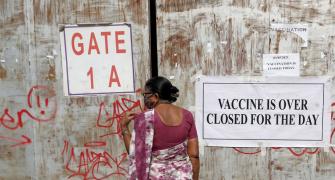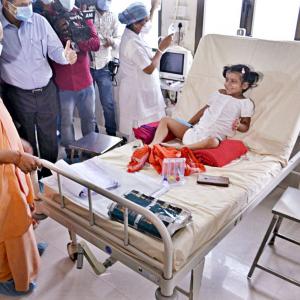Districts with a higher literacy level tend to perform better in vaccination than districts with low levels of school-going population, finds Ishaan Gera.

Covid-19 infections are spreading but vaccinations have slowed down in India. The country is vaccinating nearly 18 lakh people daily, whereas a month ago, it had vaccinated over 36 lakh people in a day.

Vaccine shortage is one reason for the decline but there is also hesitancy amongst the population. With rising cases, many people are sceptical about going to vaccination sites.
This is also the reason why there is statewide variation in vaccination. States, which have better healthcare systems, have been able to vaccinate more people than others. Kerala and Gujarat have administered nearly 24 doses for 100 people, whereas Maharashtra has only been able to administer 16 doses.
Smaller states have been able to do better in this regard than those with a larger population or area. While Sikkim, Tripura and Andaman and Nicobar Islands have been able to administer nearly 30 doses per 100 people, larger states like Uttar Pradesh and Tamil Nadu have only been able to administer 6-8 doses per 100 people.

A Business Standard analysis shows that education may also be playing a role in the state’s vaccination strategy.
An analysis of literacy levels using Census 2011 data indicates that districts with a higher literacy level tend to perform better in vaccination than districts with low levels of school-going population.
So, while the average population, which was either in schools or colleges or other institutions, was 26.53 per cent, districts with a higher level of people enrolled in educational institutions performed better than those with lower levels.
Data analysis from districts shows that districts where 30 per cent (average + standard deviation) or more people were enrolled in educational institutions or had completed some education had been administering 15 doses per 100 people. In contrast, districts with lesser than 30 per cent educated people were administering a much lower 14 doses.

Women education had a much more significant role to play in vaccination as well. While the average educated population for females was much lower, 25.2 per cent, in these cases applying the same formula as above, we found that districts with more educated women (over 29 per cent) administered 15.5 doses per 100 people. In contrast, those with lower education level administered only 13.9 doses per 100 people.

Additionally, our analysis found that districts with a higher proportion of college-going people performed much better than others.
So, while the average college-going population in districts was 2.6 per cent, those with 3.73 per cent or more college-educated people administered 18.5 doses per 100 people, whereas those below 1.47 per cent only administered 12.3 doses.
Similarly, women being college-educated had a higher impact on vaccination. The average number of women in college was 2.23 per cent. Those districts which had over 3.38 per cent women from college were administering 19 doses per 100 people, whereas districts with less than 1.08 per cent women in college had only administered 11.4 doses per 100 people.

While education is certainly a determinant, what cannot be established using our data is whether it was access to registration or general awareness for more educated districts performing better at vaccination.











